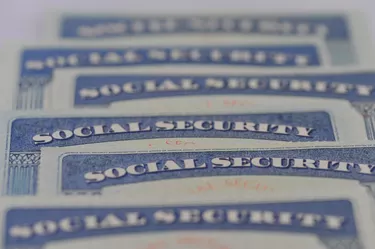
What your Social Security number says about you depends on when you were issued a number. The nine digits that make up each unique number have always been divided into a three-digit area number, a two-digit group number and a four-digit serial number. Before mid-2011, a Social Security number used to identify both the issuing state and the approximate time the card was issued. However, since June 25, 2011, a completely random number-generating process has been in place that both protects your identity and ensures the integrity of Social Security numbers in general.
The Area Number
Video of the Day
The first three digits of a Social Security number previously identified the state in which the number was assigned. For example, the first three digits for a number issued in Ohio before June 25, 2011, ranged from 268 to 302, and the first three digits of a Wisconsin-issued number ranged from 387 to 399.
Video of the Day
To eliminate the problems of running out of numbers, area group numbers generated after mid-2011 come from a combined pool of unissued numbers.
The Group Number
Prior to randomization, the group number provided a way to detect an invalid or fake Social Security number.
The two-digit group numbers ranged from 01 to 99 and were allocated in a specific zigzag pattern. The pattern started with odd numbers between 01 and 09, then even numbers from 10 to 98, even numbers from 02 to 08 and finally odd numbers from 11 to 99. According to this pattern, a Social Security number with 09 as a group number was issued long before the number 97.
Although not a foolproof detection method, comparing the group number against the Social Security Administration's most current High Group List -- updated monthly before June 2011 -- could alert an employer or other interested person to a potentially invalid Social Security number. For example, an older adult presenting a number in which the middle digits are 89 may hold a fake number because odd numbers from 11 to 99 were among the last issued in 2011.
The Serial Number
The last group of numbers provided no special meaning other than as an extra measure to ensure that every number issued was unique. Serial numbers ranging from 0001 to 9999 were issued in consecutive order.